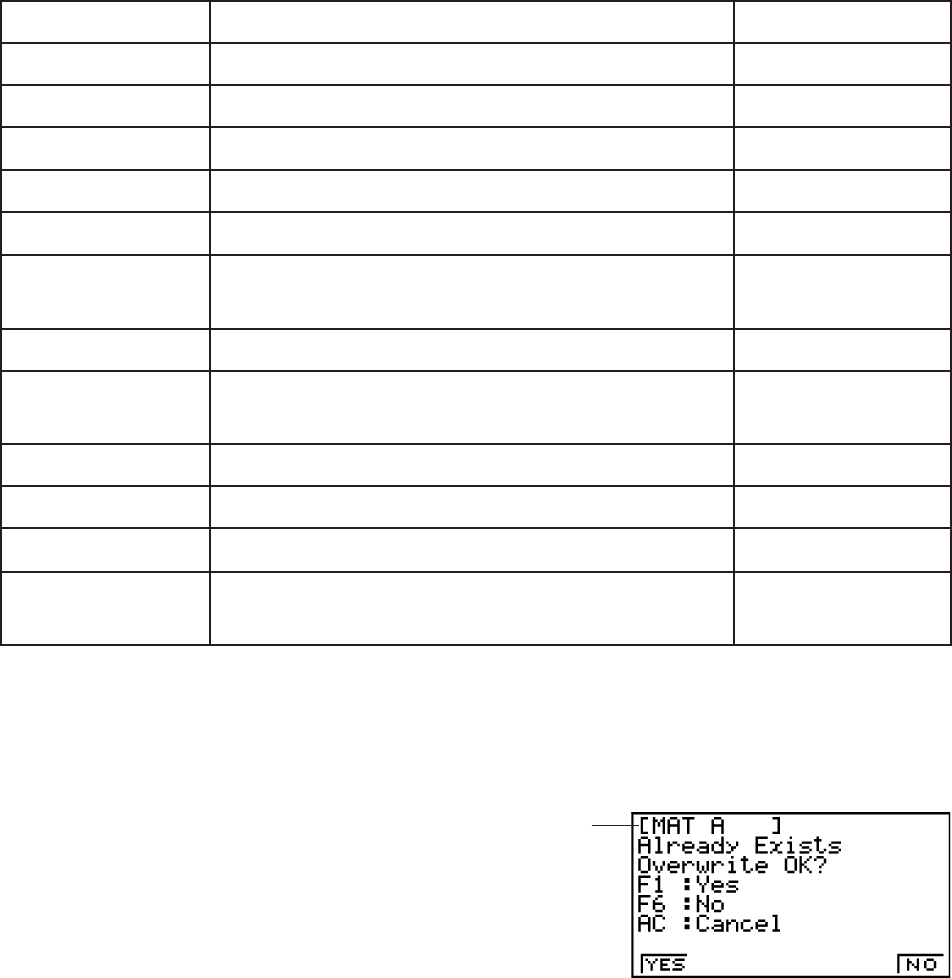
13-6
Data Item Contents Overwrite Check*
1
RECURSION* Recursion data No
SETUP Setup data No
STAT Stat result data No
<STRING> String memory group
STR
n
String memory (1 to 20) data No
SYSTEM
OS and data shared by applications (clipboard,
replay, history, etc.)
No
<S-SHEET> Spreadsheet group
Spreadsheet data
names
Spreadsheet data
(All spreadsheet data are listed.)
Ye s
TABLE Table data No
<V-WIN> V-Window memory group
V-WIN
n
V-Window memory (1 to 6) contents No
Y=DATA
Graph expressions, graph draw/non-draw status,
V-Window contents, zoom factors
No
*
1
No overwrite check: If the receiving unit already contains the same type of data, the existing
data is overwritten with the new data.
With overwrite check: If the receiving unit already contains the same type of data, a
message appears to ask if the existing data should be overwritten with the new data.
Data item name
• (YES) ... {replaces the receiving unit’s existing data
with the new data}
• (NO) ... {skips to next data item}
Note the following precautions whenever you perform data communications.
• An error occurs whenever you try to send data to a receiving unit that is not yet standing by
to receive data. When this happens, press ) to clear the error and try again, after setting
up the receiving unit to receive data.
• An error occurs whenever the receiving unit does not receive any data approximately six
minutes after it is set up to receive data. When this happens, press ) to clear the error.
• An error occurs during data communications if the cable becomes disconnected, if the
parameters of the two units do not match, or if any other communications problem occurs.
When this happens, press ) to clear the error, then correct the problem before trying data
communications again. If data communications are interrupted by the ) key operation or
an error, any data successfully received up to the interruption will be in the memory of the
receiving unit.
• An error occurs if the receiving unit memory becomes full during data communications. When
this happens, press ) to clear the error and delete unneeded data from the receiving unit
to make room for the new data, and then try again.


















